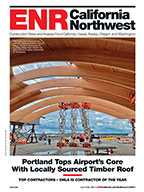The unemployment rate for construction workers fell to the lowest July level in five years, even though employment has stagnated in the past four months, according to a recent analysis of new government data by the Associated General Contractors of America.
“Although the unemployment rate for experienced construction workers came down to 9.1% in July, many of those workers have left the industry for other jobs, school or training programs, or retirement,” said Ken Simonson, the association's chief economist. “While the industry has added workers in the past year, employment growth has been negligible recently.”
The unemployment rate for workers who last worked in construction declined to 9.1% from 12.3% in July 2012, not seasonally adjusted, and the number of unemployed construction workers dropped by 227,000 to 767,000. The number of unemployed workers with prior construction experience was the lowest July total since July 2007, while the unemployment rate was the lowest July rate since 2008, Simonson noted.
Construction employment in July totaled 5.79 million, seasonally adjusted, up by 166,000 or 3.0% from July 2012 but down by 6,000 from the revised June level. Although both residential and nonresidential contractors have added workers in the past year, employment growth in July occurred only on the residential side.
Residential building and specialty trade contractors added 6,300 employees in July and 92,100 (4.5%) over 12 months. Nonresidential building, specialty trade and heavy and civil engineering construction firms lost 11,500 workers in June but added 74,300 (2.1%) from a year earlier. Architectural and engineering services employment rose by 2.3% over the year, suggesting further modest gains in construction ahead.
“The tilt in hiring toward residential construction and the recent flattening of overall industry employment fit with Thursday’s report from the Census Bureau on construction spending through June,” Simonson observed. “Those figures showed strong year-over-year growth in residential construction, little change in private nonresidential and worsening declines in public construction. These patterns, along with the slow growth in design industry employment, suggest that contractors will remain cautious about adding workers this year.”


Post a comment to this article
Report Abusive Comment